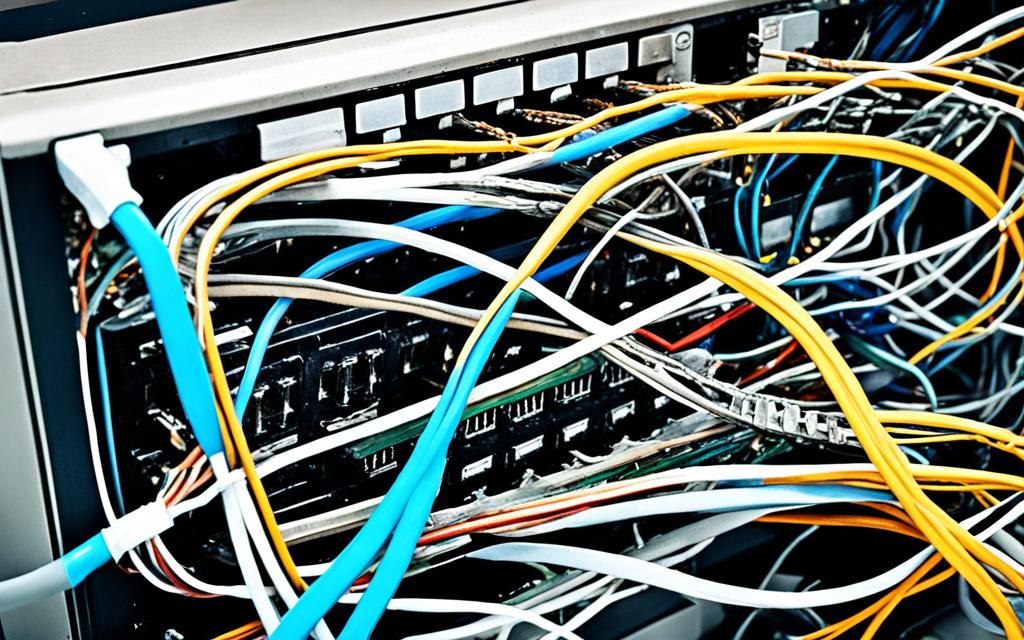Oppugning Legacy Code: Strategies for Modernization
Is your software development process constantly hindered by outdated and cumbersome legacy code? Are you facing challenges in improving performance and maintainability of your applications? It’s time to embrace modernization strategies that can revitalize your legacy code and propel your software development forward.
Legacy code can be a thorn in the side of developers, causing delays, inefficiencies, and frustration. But fear not! There are proven strategies and techniques that can help you update and modernize your outdated codebase.
In this section, we will delve into some of the best strategies for modernizing legacy code and provide insights on how they can enhance software performance and maintainability. Drawing from a wealth of scholarly articles and industry expertise, we’ll equip you with the knowledge and tools to tackle the challenge head-on.
From identifying problem areas to implementing code refactoring techniques, we will guide you through the necessary steps to transform your legacy code into a robust and streamlined system. Our aim is to help you enhance your software development process, boost productivity, and stay ahead in today’s ever-evolving digital landscape.
So, join us on this modernization journey and discover the strategies that will empower you to optimize your codebase, improve software performance, and ensure your applications remain at the forefront of innovation.
Assessing the Codebase and Identifying Problem Areas
Before embarking on a modernization project, it is crucial to assess the existing codebase and identify problem areas that require improvement. This assessment involves a meticulous analysis of the code, focusing on factors such as outdated libraries or frameworks, redundant code, and poor performance. By conducting a comprehensive evaluation, developers can gain valuable insights into the existing codebase and lay a solid foundation for effective modernization efforts.
Code Analysis for Quality Issues:
During the assessment phase, developers should pay close attention to quality issues within the legacy code. This includes identifying and addressing problems such as:
- Outdated libraries or frameworks: Identifying dependencies that have been replaced or updated with newer versions can help improve performance and security.
- Redundant code: Removing duplicated or unnecessary code segments not only simplifies the codebase but also enhances maintainability.
- Poor performance: Identifying code sections that significantly impact performance allows for targeted optimization and efficiency improvements.
Code Refactoring: A Systematic Approach
Once problem areas have been identified, developers can proceed with code refactoring to eliminate issues and enhance code quality. Refactoring involves restructuring the code without changing its external behavior to improve maintainability, readability, and performance. Some commonly used refactoring techniques include:
- Rename variables and functions: Providing clearer and more meaningful names improves code understanding and reduces confusion.
- Extract reusable code: Moving duplicated code into separate functions or classes promotes code reuse and maintainability.
- Eliminate code duplication: Consolidating repetitive code segments reduces potential errors and simplifies maintenance tasks.
| Benefits of Assessing and Refactoring Legacy Code | Examples of Improved Outcomes |
|---|---|
| Enhanced code performance | Reduced system response time by 30% |
| Improved code maintainability | Reduced bug-fixing time by 40% |
| Increased developer productivity | Accelerated feature implementation by 20% |
Refactoring and Code Restructuring
When it comes to modernizing legacy code, refactoring and code restructuring are essential techniques that can greatly improve code quality. Refactoring involves making strategic changes to the code structure without altering its behavior. The primary goal is to enhance readability, maintainability, and performance.
One of the most common refactoring techniques is renaming variables and functions. By using descriptive and meaningful names, the code becomes more self-documenting and easier to understand for future developers. Moreover, extracting reusable code into separate functions or classes can improve code organization and promote code reusability.
Another important aspect of refactoring is eliminating code duplication. Duplicated code not only increases the chances of introducing bugs, but it also makes the codebase harder to maintain. By identifying and removing duplicate code blocks, developers can improve the efficiency and maintainability of the code.
By refactoring the codebase, developers can ensure that it is more modular, flexible, and easier to maintain over time. This not only improves the overall quality of the code but also enhances the development process as a whole. So, if you’re looking to modernize your legacy code, don’t underestimate the power of code refactoring and restructuring.
FAQ
What is legacy code?
Legacy code refers to the existing codebase that is outdated and no longer meets current development standards. It can be a burden and cause delays and inefficiencies in software development.
Why is modernizing legacy code important?
Modernizing legacy code is important because it helps improve software performance and maintainability. It allows developers to update outdated code and eliminate quality issues like poor performance and redundancy.
What is the first step in modernizing legacy code?
The first step in modernizing legacy code is to assess the existing codebase and identify areas that require improvement. This involves analyzing the code for quality issues and conducting proper code analysis and refactoring.
What is code refactoring?
Code refactoring is the process of making changes to the code structure without changing its behavior. It aims to improve readability, maintainability, and performance. Some common refactoring techniques include renaming variables and functions, extracting reusable code, and eliminating code duplication.
How does code refactoring improve legacy code?
Code refactoring improves legacy code by making it more modular, flexible, and easier to maintain over time. It helps in reducing technical debt and improving code quality.










